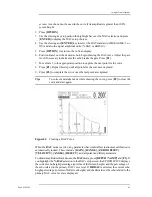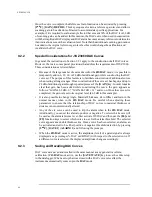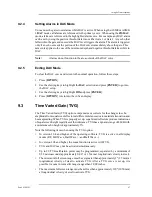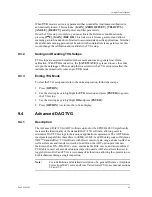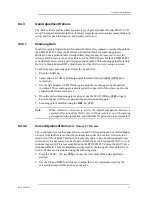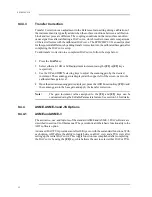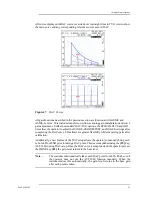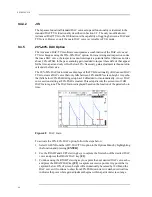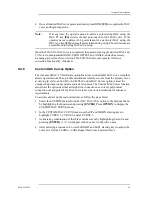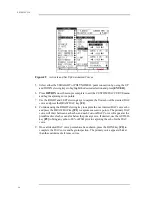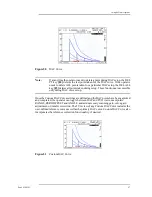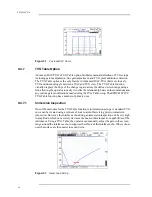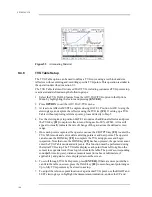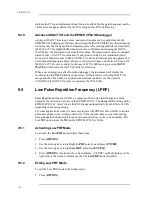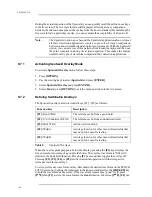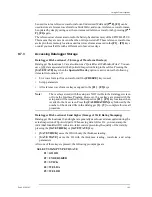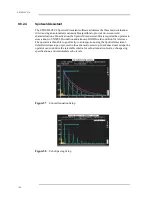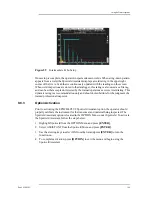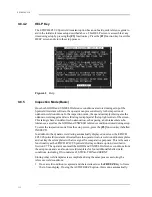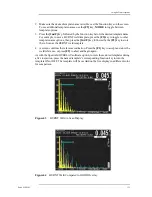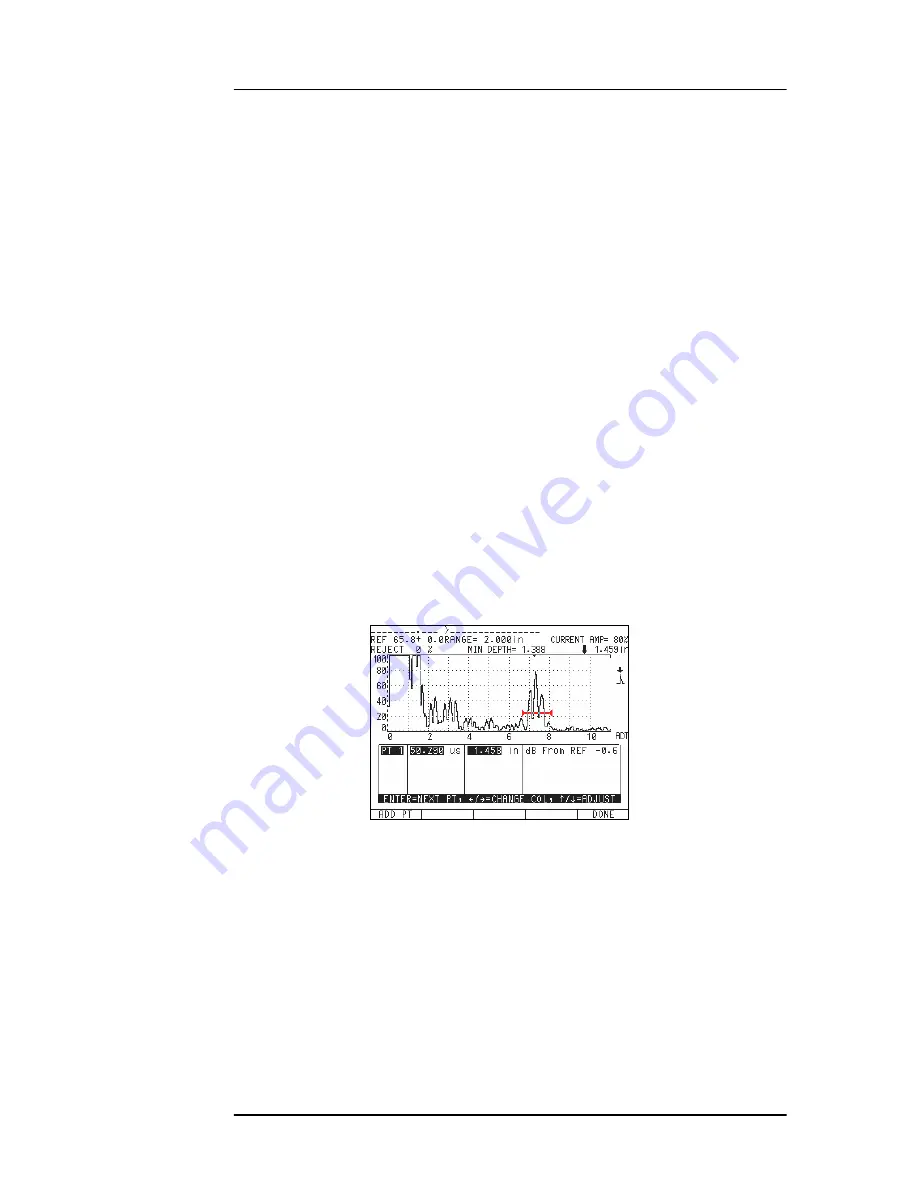
Using Software Options
Part # 910-250C
99
For immersion inspections, EPOCH 4PLUS instruments with the latest hardware revision
allow the TVG Table function to work in conjunction with the High Pulse Repetition
Frequency (HPRF) option and the Interface Gate (IG) option. This compatibility allows
the TVG Table to be used in fast scanning applications where HPRF is required.
9.4.7.2
Manual TVG Setup
In many circumstances, a part must be inspected for flaws using a TVG curve to determine
the rejectability of any flaws found within the part, but the part is too large or expensive to
have a reference block of equal size and composition. The TVG Table feature allows the
operator to manually add points along the TVG curve and manipulate the gain slope across
the screen range to create an accurate TVG curve without a reference block (typically, this
is accomplished using the DGS diagram that corresponds to the particular material and
transducer being used).
9.4.7.3
Highly Attenuating Material
In many highly attenuating materials, such as many composites, it takes a large amount of
gain to successfully penetrate to the backwall of a part. This high level of gain can cause
significant noise in nearer areas of the part and completely obscure any potential defects in
the beginning half of the inspected material. A TVG Table can be used to modify the gain
throughout the part to allow for clear visibility of the backwall for thickness measurement
and clearer inspection of near surface reflectors. An initial gain can be established and a
slope defined to ramp the gain up from the interface of the part to the backwall.
Figure 54
Attenuating Material
Summary of Contents for Panametrics Epoch 4 Plus
Page 4: ...EPOCH 4PLUS...
Page 10: ...EPOCH 4Plus...
Page 18: ...8 EPOCH 4PLUS...
Page 40: ...30 EPOCH 4PLUS...
Page 50: ...40 EPOCH 4PLUS...
Page 54: ...44 EPOCH 4PLUS...
Page 92: ...82 EPOCH 4PLUS...
Page 172: ...162 EPOCH 4PLUS...

